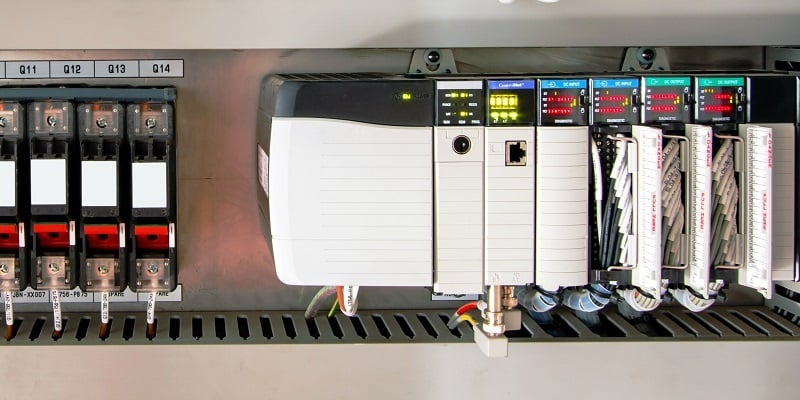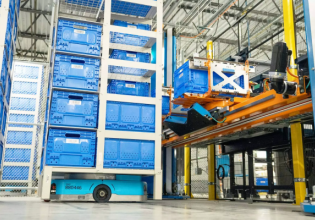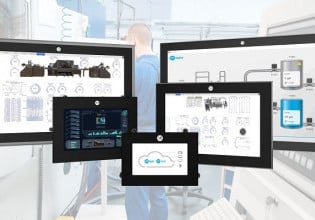Examples of Digital Signals in Control Systems
Digital signals hold a prominent position due to their compatibility with computers. But what are digital signals, and what are some examples of the various devices used with digital inputs and outputs?
In the realm of modern computing, the exchange of information occurs through various forms of signals. Among the many types of signals, digital signals hold a prominent position due to their compatibility with computers. In this article, we will delve into the concept of digital signals, explore why values must be converted into a digital format, and various devices for digital input and output.
What is a Digital Signal?
Computers, being digital machines, inherently process and manipulate digital signals. This preference arises from the underlying binary nature of computing systems. By converting analog signals into a digital format, computers can effectively interpret, analyze, and act upon the information.
To enable a computer to "see" and comprehend the information in its digital form, analog signals undergo a conversion process known as analog-to-digital conversion. This process involves two steps: sampling and quantization.
Sampling: In sampling, the analog signal is measured at regular intervals, rapidly enough to preserve the essential characteristics of the original signal.
Quantization: Following sampling, the continuous range of values obtained from the analog signal is converted into a finite set of digital values, mapped from a predefined range of possible values. For Boolean signals, the quantization is either 0 or 1.
The resultant digital signal, composed of a series of discrete values, can now be processed, stored, and transmitted by computers with high levels of accuracy.

Figure 1. Visual representation of continuous analog signal being converted to a digital signal via analog-to-digital conversion.
Digital vs. Discrete Signals
Digital control refers to a control system that operates using digital signals and computational techniques. Control systems rely on digital devices such as microprocessors, microcontrollers, and digital signal processors to execute control algorithms and make decisions based on the processed data.
Discrete control, on the other hand, refers to a control system that operates using discrete values and operates in a sequential or stepwise manner. Discrete control systems typically utilize logic-based components, such as relays, switches, and timers to control the system behavior. The data to and from these discrete devices usually consists of logical levels of only On/Off or 1/0.
Digital Input Modules
Digital input modules are electronic devices designed to interface digital signals from external devices or sensors with a digital control system. These modules convert external signals into digital form for processing and interpretation by the control system. Here are a few examples of digital input modules:
Programmable Logic Controllers (PLCs)
PLCs often incorporate digital input modules to receive signals from various sensors and switches. These modules allow the PLC to monitor the state of external devices, such as limit switches, push buttons, proximity sensors, or safety switches. PLCs are a bit unique, in that when they refer to digital inputs, that usually means discrete (on/off) devices ONLY.
Data Acquisition (DAQ) Systems
Digital input modules are commonly used in data acquisition systems to capture and digitize signals from switches, sensors, or transducers. These modules enable the measurement and monitoring of discrete events or binary states in industrial, scientific, or research applications.
Microcontrollers
Many microcontroller platforms feature digital input pins or modules that allow the microcontroller to sense and respond to digital signals. These modules are often used in embedded systems, automation, robotics, or IoT applications to interface with buttons, switches, or sensors. Many microcontrollers can receive signals from all kinds of digital devices, as listed below.

Figure 2. Visual representation of a PLC with (from left to right) its power supply, processor, and various communication, input, and output modules. Image used courtesy of Adobe Stock
Digital Input Devices
Digital input devices are hardware peripherals or components that generate digital signals based on user input or environmental conditions. These devices provide a means for users or external systems to interact with digital control systems. Here are a few examples of digital input devices:
Push Buttons
Push buttons are commonly used as input devices in control panels, industrial machinery, and consumer electronics.
Sensors
Many condition monitoring sensors energize when the input exceeds a certain threshold. These can include limit switches, proximity sensors, pressure and temperature sensors, and a host of others.
Keyboards
Keyboards are widely used digital input devices that convert keystrokes into digital signals. Each key press generates a specific digital code, allowing users to input text or commands into computers.
Touchscreens
Touchscreens enable users to provide input through direct physical contact with the display surface. They detect and convert touch gestures, taps, or swipes into digital signals, allowing for intuitive interaction with smartphones, tablets, and information kiosks.
These examples represent just a fraction of the digital input modules and devices available. The choice of digital input module or device depends on the specific requirements of the system.

Figure 3. All of these devices are digital - the buttons and switches are discrete, the small display keypads use digital communication. Image used courtesy of Adobe Stock
Digital Output Modules and Devices
Digital output modules, interfacing with digital output devices, are components of a control system that generate digital or control signals to interact with external devices or systems. Many PLCs offer digital output or relay output modules for this purpose.
Digital output modules in PLCs provide a means to interface with output devices that require discrete on/off control. These modules receive digital signals from the PLC's processor and convert them into output signals suitable for controlling external devices. Here are a few reasons why PLCs are often found with digital output modules:
Controlling Actuators
Digital output modules are commonly used to control actuators such as solenoid valves, motor starters, relays, contactors, or pneumatic cylinders in industrial applications.
Indicating or Signaling
Digital outputs can be used to drive indicator lights, LEDs, or displays to provide visual feedback or status indication.
Alarms and Safety Systems
Digital output modules play a crucial role in alarm systems and safety interlocks. They can trigger audible alarms, visual alarms, or safety devices like emergency stop buttons.
Process Control
Digital outputs are extensively used in process control systems to regulate and control various processes. For example, a digital output module can regulate the flow of fluids or gases in an industrial process.
Relay Loads
Relays are driven in situations where high current or voltage loads need to be controlled. They can handle higher power requirements and are suitable for driving devices such as motors, pumps, heaters, or larger industrial loads.

Figure 3. Relays are, perhaps, the most classic symbolization of a discrete load device. Image used courtesy of Adobe Stock
There are numerous benefits of digital output modules in PLCs, when compared to analog output modules.
- Versatility: Digital output modules offer flexibility and compatibility with a wide range of output devices. They can be easily connected to and control various actuators and output devices.
- Speed and Precision: Digital outputs provide rapid response times, allowing for precise control and timing in switching output devices. They can be synchronized with other processes or inputs, enabling coordinated actions within the control system.
- Scalability: PLCs typically support more digital output points, allowing for the expansion of output capabilities as system requirements grow or change. Additional modules can be added or reconfigured to accommodate a higher number of output devices.
- Reliability: Digital outputs in PLCs offer robustness and durability, making them suitable for demanding industrial environments.
Digital signals play a crucial role in computing, control systems, and human-computer interaction. By representing information as discrete binary values, digital signals enable computers to process, interpret, and act upon data with precision and efficiency.






